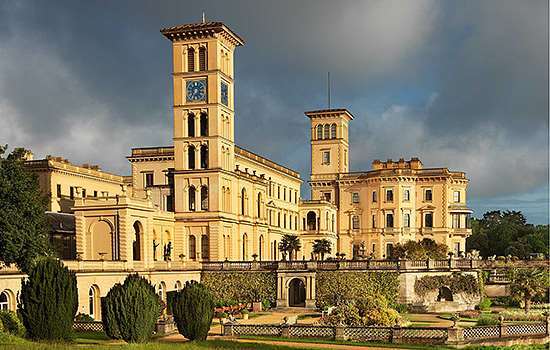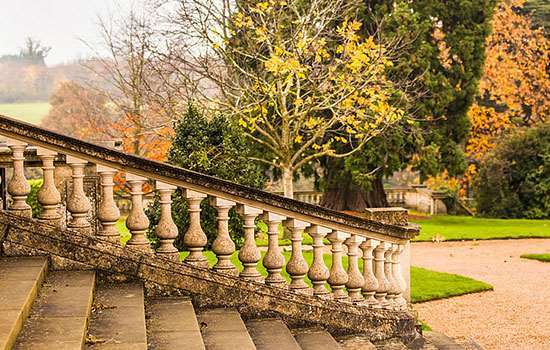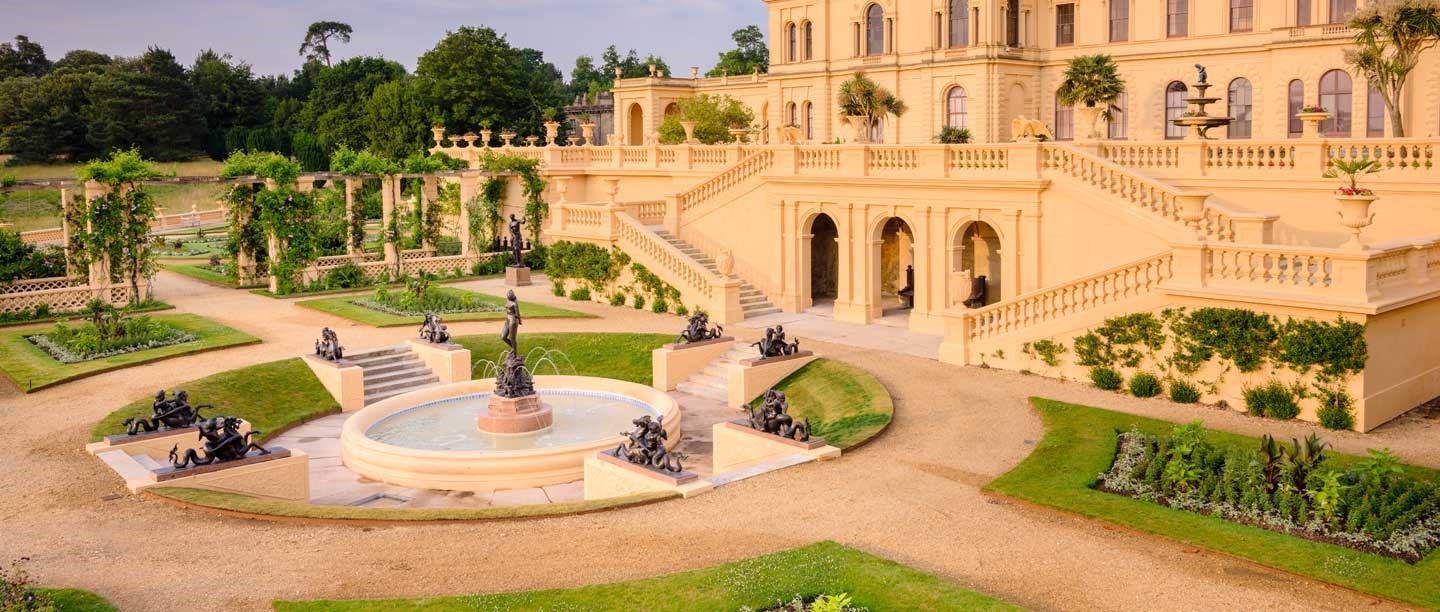A Royal Retreat
Queen Victoria and Prince Albert bought Osborne House in 1845, seeking an escape from the hustle and bustle of London. To oversee the building, they commissioned master builder Thomas Cubitt, who advised knocking down the original house and starting afresh.
To save money, while giving the impression that the new Osborne House and its terraces were built from stone, the house and its garden terraces were built of brick, rendered with concrete. A pigment was added to the render to give the building the appearance of Bath stone.
Over the years, this render failed. Ad hoc repairs led to a patchwork of differently coloured rendered areas. In winter 2016, English Heritage kicked off a project of major conservation works.
Princely Planting
The plants at Osborne were a major interest for Prince Albert. He started planting on the terraces in 1850, before construction was even finished. Many of these plants can still be seen today and consequently are of great historic value.
Among the first things Prince Albert planted were the wall-trained Magnolia grandiflora, now over 167 years old, and the Myrtus communis or wall-trained myrtle, famously used in royal wedding bouquets.
Restored historic planting at Osborne includes vines across the pergola, originally planted in 1851, and Camellias on the lower terrace, first planted in 1853 and replanted in the mid-1990s.
Project Pruning
A key consideration for the gardens team in this project was how the walls – covered with plants of such significance – could be repaired and repainted. The team wanted to retain as much foliage as possible, but also enable access to the walls for repair work.
The easiest plant on the terraces to deal with was the myrtle – a very vigorous plant at Osborne, which regrows easily. The team selected stems they wanted to save for retraining against the wall at the end of the project. All other stems were pruned to the ground. The saved stems were then tied together and attached to training wires on the walls.
The magnolias presented a different set of challenges. The younger plants were treated in a similar fashion to the myrtles – thinning the foliage by cutting out the weak and damaged shoots completely and bundling the saved shoots together.
However, the older magnolias required careful consideration. These were undoubtedly Prince Albert’s original plantings, and were trained well against the wall. They also had old, thick stems, which couldn’t be bent away from the wall to allow easy access.
Preparing Royal Roses
Two types of rose grow on the pergola – R. ‘May Queen’ and R. ‘Félicité et Perpétue’. These are trained around the pergola pillars, and historical photographs show that they were grown as individual upright stems.
To allow access to the pillars during conservation, the roses were tied to vines or wisteria, and the stems were pulled right away from the pillars. Where this wasn’t possible, they were tied together and attached to metal stakes driven into the ground.
Cleaning and Protecting
The repair work to the terraces also involved chemically cleaning the walls, in a process known as Doff cleaning. However, this raised more challenges for the experienced garden team, as the ‘biocide’, or chemical, used for this process is an alkaline solution. This could have proved harmful to nearby plants, so great care was taken in its use. It was used to kill any algae before cleaning, and the Doff cleaning applied super-heated water to remove this algae as well as dirt and moss.
After all the cleaning, protecting and pruning, and with the repaired and repainted terraces flowing as one with the house, the foliage selected and saved by the garden team quickly regrew.
Those visiting Osborne today will be seeing terraces that now look as they did when Prince Albert completed them in 1853.
Find out more
-

History of Osborne
Read more about the history of Victoria and Albert’s private home on the Isle of Wight.
-

Historic Gardens
Find out where you can visit one of the historic gardens cared for by English Heritage.
